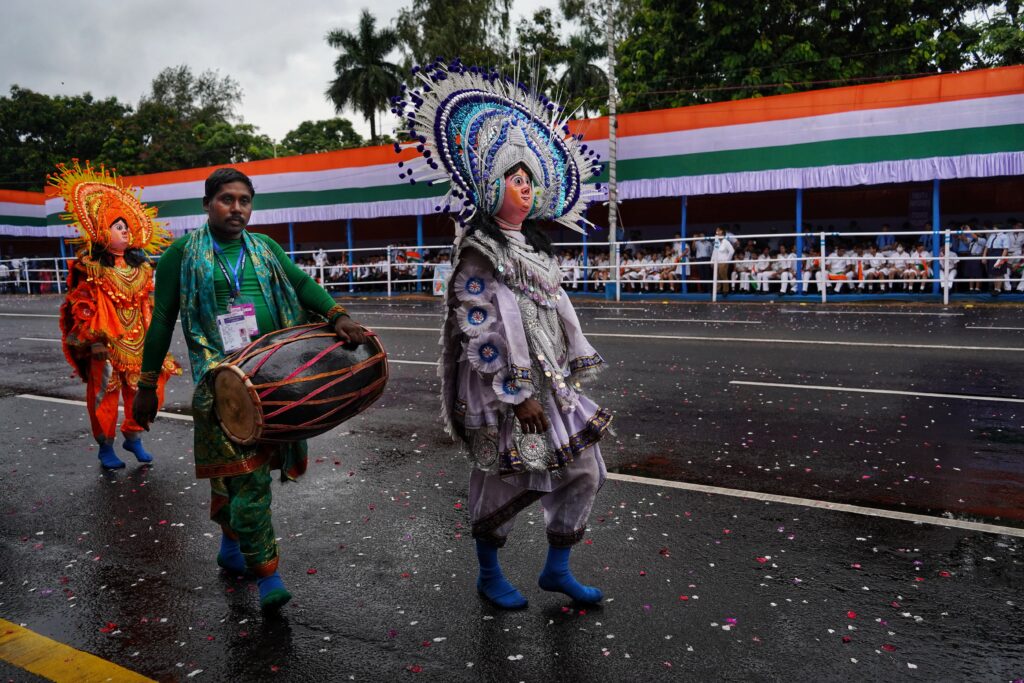Table of Contents

Introduction:
India’s Republic Day, celebrated on January 26th each year, is a momentous occasion that commemorates the adoption of the Constitution in 1950. While the grand parade and cultural events are well-known, there are numerous lesser-known facts that add layers of fascination to this historic day. In this exploration, we will delve into 20 unique and intriguing facts about India’s Republic Day that might not be commonly known.
1. Original Proposal for Independence Day:
The proposal for India’s Independence Day was initially made on January 26, 1930. It wasn’t until 20 years later, on January 26, 1950, that the day was chosen for the adoption of the Constitution.
2. Constitution’s First Page Uniqueness:
The first page of the original Constitution has stunning artwork by Beohar Rammanohar Sinha, featuring images of Lord Ram, Sita, and Lakshman. This artistic touch adds a unique dimension to the foundational document.
3. Unique Oath-Taking Ceremony:
Dr. Rajendra Prasad, the first President of India, took the oath of office on January 26, 1950, at 10:24 am. This precise timing was considered auspicious by astrologers.
4. India’s Republic Day Parade Start Time:
The Republic Day Parade in New Delhi starts exactly at 9 am and concludes at 10:15 am. This punctuality is a testament to the disciplined nature of the event.
5. Abandoning the Horse-Drawn Carriage:
In the early years of the Republic Day Parade, the President used to arrive at the venue in a horse-drawn carriage. However, this practice was abandoned in 1952 when Dr. Rajendra Prasad opted for a more modern and symbolic car.
6. First Female Fighter Pilot at the Parade:
In 2019, Flight Lieutenant Bhawana Kanth created history by becoming the first female fighter pilot to participate in the Republic Day Parade. Her inclusion symbolized the breaking of gender barriers in the Indian armed forces.
7. Republic Day Chief Guest Protocol:
The Chief Guest for Republic Day celebrations is accorded a 21-gun salute, showcasing the traditional military honors extended to dignitaries. This gesture underscores the respect and hospitality extended to the guest.
8. Unique Guest Choices:
The tradition of inviting foreign dignitaries as Chief Guests began in 1950 with Sukarno, the President of Indonesia. Since then, the list has included leaders from diverse fields, such as business magnates, cultural icons, and Nobel laureates.
9. First Republic Day Tableau Theme:
The first tableau at the Republic Day Parade showcased the progression of the agricultural sector. It depicted a scene from the Bhilai Steel Plant, emphasizing India’s industrial growth.

10. No Republic Day Celebrations During Emergency:
In 1976-77, during the Emergency period, Republic Day celebrations were a low-key affair. The usual grandeur was toned down, reflecting the somber atmosphere prevailing in the country.
11. Presidential Artillery Salute:
The President, as the Supreme Commander of the Armed Forces, takes the salute during the parade. The artillery gun salute signifies the highest form of respect accorded to the constitutional head.
12. Inclusive Bravery Awards:
The Republic Day celebrations include the presentation of bravery awards, not just to military personnel but also to civilians. This inclusion recognizes the courage displayed by ordinary citizens in the face of adversity.
13. Republic Day Flower Carpet Tradition:
Bangalore’s Lalbagh Botanical Garden hosts an annual Republic Day Flower Show where a stunning carpet of flowers is laid out. The intricate designs and vibrant colors add a touch of natural beauty to the celebrations.
14. First Lady Chief Guest:
In 1968, Queen Elizabeth II became the first and only woman to be the Chief Guest at India’s Republic Day Parade. Her presence marked a significant diplomatic moment in Indo-British relations.
15. Historic Dual Celebration in 1950:
In 1950, while the first Republic Day was being celebrated in India, Indian embassies abroad also marked the occasion. This unique dual celebration highlighted the global significance of the event.
16. Republic Day Celebration at Drass:
In 2019, for the first time, the Republic Day Parade was organized at Drass in the Union Territory of Ladakh. This move aimed to honor the soldiers stationed in the region, braving extreme weather conditions.
17. Cultural Integration in Parade:
The Republic Day Parade is not just a military spectacle; it also reflects the cultural diversity of India. Tableaux from different states showcase their unique traditions, adding a colorful and vibrant dimension to the event.
18. Tricolor by Skydivers:
The Republic Day Parade witnesses thrilling skydiving performances. Skydivers from the armed forces descend from the sky, trailing the tricolor, creating a breathtaking visual spectacle.
19. Unique Beating Retreat at Wagah Border:
While the Beating Retreat ceremony in Delhi is well-known, a similar ceremony takes place at the Wagah Border. The synchronized lowering of flags by Indian and Pakistani soldiers symbolizes the hope for peace and goodwill.
20. Integration of Technology:
In recent years, technology has played a significant role in the Republic Day Parade. The integration of advanced communication systems and the use of drones showcase India’s technological advancements on the global stage.
Conclusion:
India’s Republic Day is not just a historical milestone; it is a celebration of unity, diversity, and resilience. As we witness the grandeur of the parade and the cultural performances, let us also appreciate the lesser-known facts that make this day truly unique. From artistic touches on the Constitution to the inclusive nature of the celebrations, each fact adds a layer of depth to the tapestry of India’s democratic journey. As we stand together on January 26th each year, may we not only honor the past but also look forward to a future that upholds the principles of justice, liberty, equality, and fraternity.

